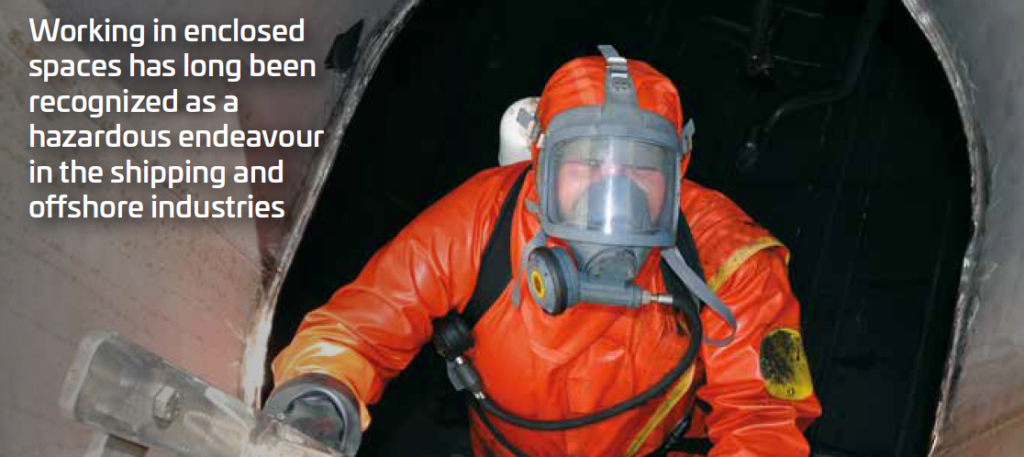
By Gary Bruce, AMS Global Group
Working in enclosed spaces has long been recognized as a hazardous endeavour in the shipping and offshore industries. Despite significant safety measures, accidents still occur, prompting a continuous quest for improvement. This article delves into the utilization of automated vessel self-cleaning systems to mitigate risks and enhance safety. We explore the journey of implementing these systems, overcoming challenges, and reaping the benefits they offer.
Enclosed spaces pose substantial risks, and traditional safety measures have their limitations. Acknowledging this, industry professionals sought alternatives to minimize the need for human entry into tanks, where dangers lurk. The realization that the best way to reduce risks is to avoid putting people in harm’s way led to the exploration of automated vessel self-cleaning systems.
Implementing this new approach required concerted efforts from various stakeholders. Vessel operators, crews, and logistics providers were engaged in discussions to promote and implement self-tank cleaning. Overcoming resistance and changing entrenched mindsets proved to be a challenge, but the support and cooperation of these key players were crucial in driving the adoption of this innovative solution.
Automated vessel self-cleaning systems employ spinning nozzle heads that eject high-pressure water in all directions within the tanks, effectively breaking down residues. The use of water and detergent, akin to established COW and Butterworth nozzle technologies, ensures efficient cleaning. Dosing tanks allow for adjusting the detergent amount, while heated water at around 40 degrees Celsius maximizes the cleaning effect. Tank cleaning cycles can vary in duration, depending on the tank’s condition and the desired cleanliness standard. Addressing the challenge of timely discharge/ stripping pump operation to prevent solids settling while avoiding pump dry runs has been a significant aspect of system optimization.
The adoption of automated vessel self-cleaning systems yields numerous benefits. First and foremost, it reduces the need for personnel to enter tanks, effectively mitigating risks associated with confined space entry. Furthermore, it minimizes the occurrences of slips, trips, and falls, reduces working at heights, and decreases exposure to hazardous chemicals. Cost reduction increased operational efficiency, and improved quayside congestion are additional advantages, as self-cleaning allows tanks to be cleaned at sea or while in port. The generation of similar or less waste, elimination of scaffolding requirements, reduced vessel movements, and a smaller carbon footprint further enhance the appeal of these systems.
To further reduce the need for human entry into confined spaces, recent trials have involved the use drones for remote tank inspections. These provide a rapid and safe means for remote assessment and provide much greater fidelity of data than previously achievable, surpassing even that of reach-pole cameras (see here for an example: https://www.youtube.com/watch?v=Dl5qebdnO8M ). This innovative approach demonstrates promising potential for reducing reliance on physical tank inspections and improving safety protocols. In the pursuit of improved safety standards, automated vessel self-cleaning systems have emerged as a game-changer in the shipping industry. By minimizing the need for personnel to enter tanks and leveraging advanced technologies for remote inspections, risks are mitigated, costs are reduced, and operational efficiency is enhanced. With the continued support and collaboration of industry stakeholders, the widespread adoption of these systems can revolutionize safety practices, ensuring a safer working environment for all involved







